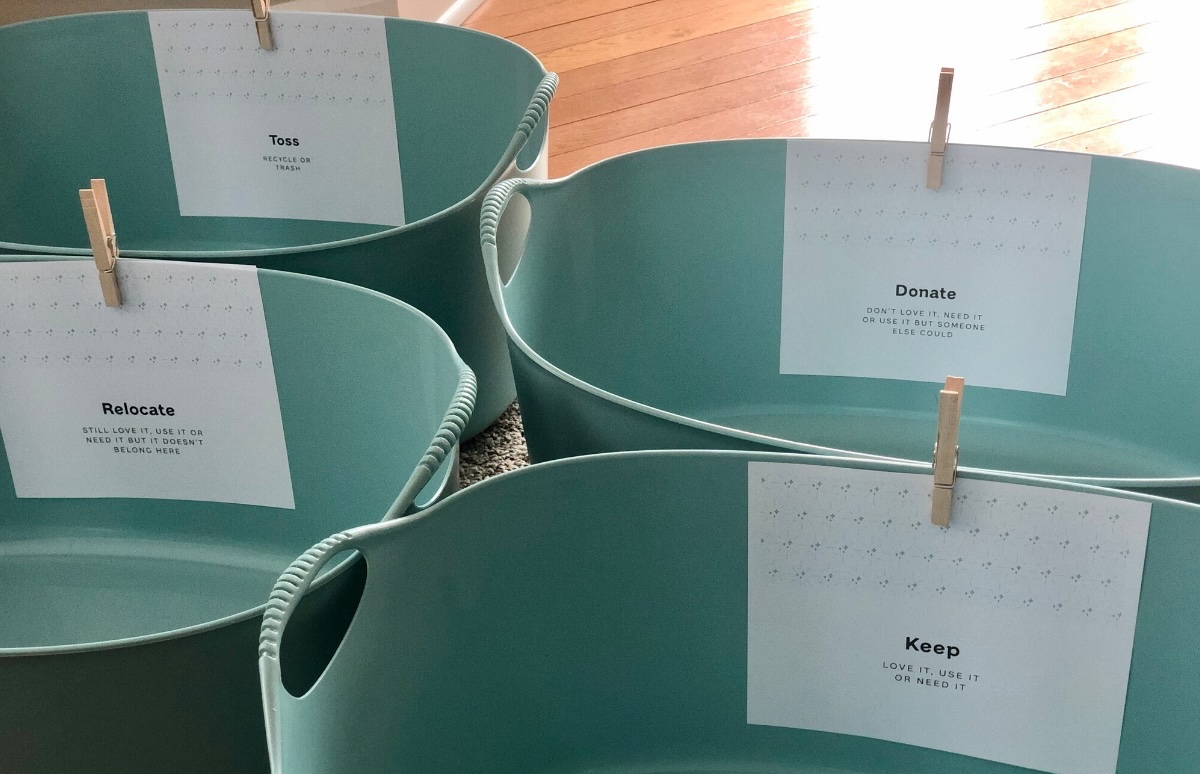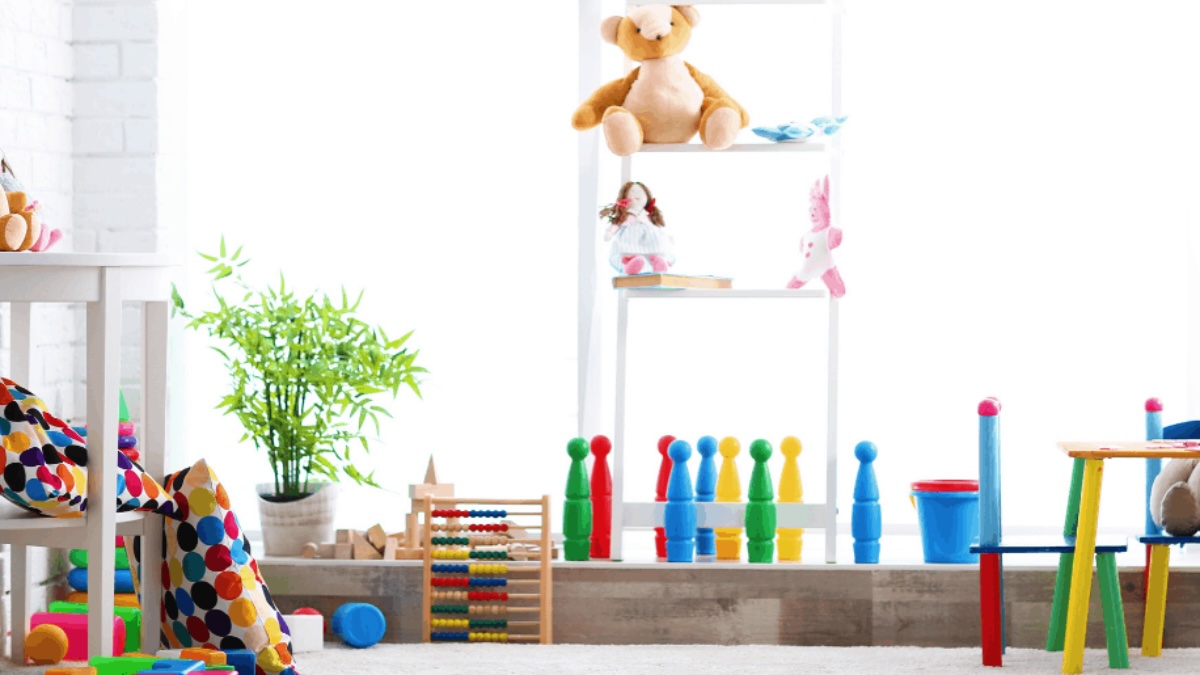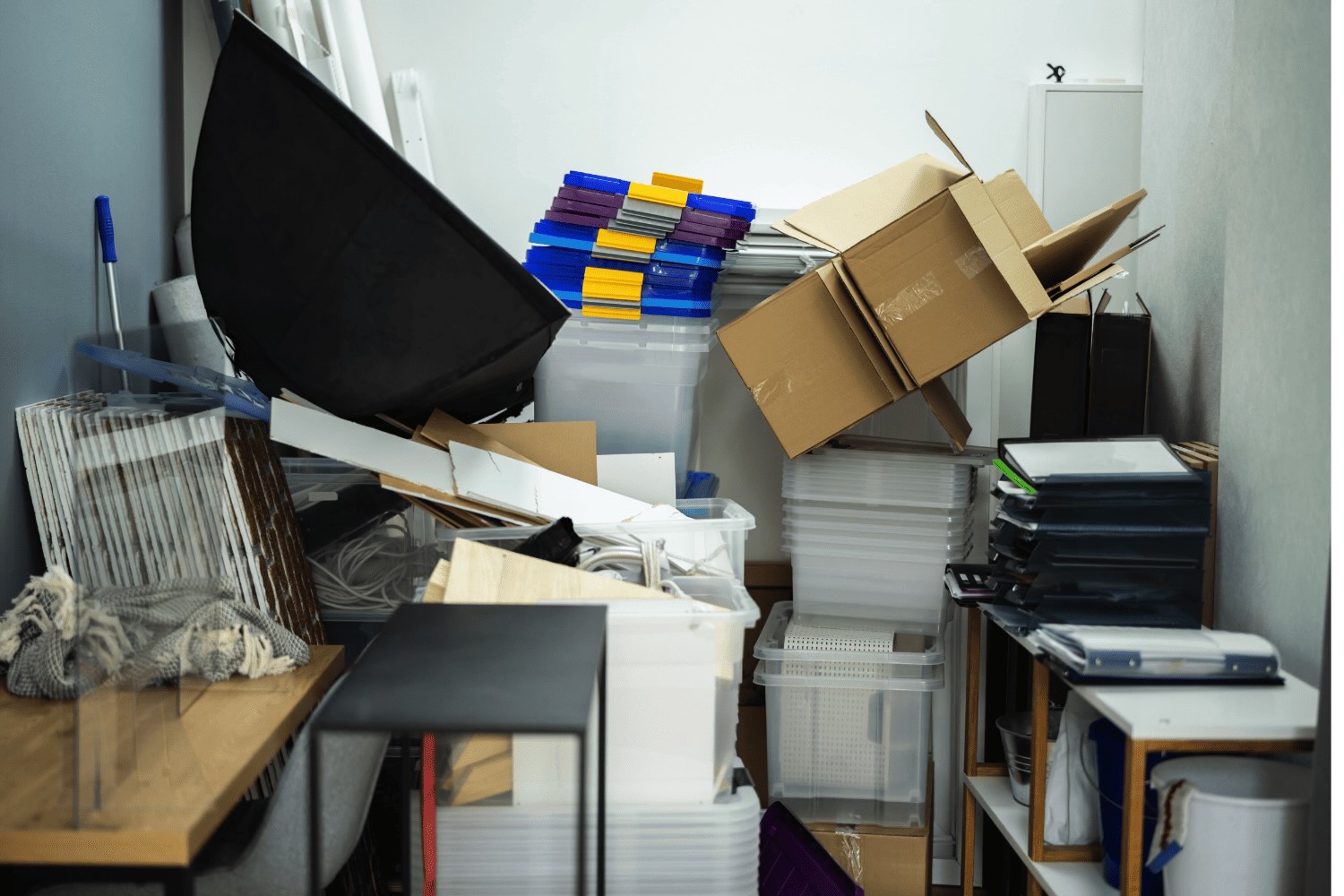Home>Storage & Organization>Decluttering Tips & Tricks>How To Declutter Papers


Decluttering Tips & Tricks
How To Declutter Papers
Modified: January 14, 2024
Learn effective decluttering tips and tricks to organize and clear out papers with our expert guide. Simplify your life and space today!
(Many of the links in this article redirect to a specific reviewed product. Your purchase of these products through affiliate links helps to generate commission for Storables.com, at no extra cost. Learn more)
Introduction
Welcome to the ultimate guide on decluttering papers! In today's digital age, we often find ourselves inundated with a mountain of paper—be it bills, receipts, letters, or various documents. The accumulation of these papers not only clutters our physical space but also adds mental stress. Fear not, as I'm here to equip you with the know-how to conquer this paper clutter and transform your space into an organized oasis.
Decluttering papers is not just about tidying up; it's about regaining control and creating a harmonious environment that fosters productivity and peace of mind. By implementing the tips and tricks in this guide, you'll not only streamline your paper management but also free up valuable mental and physical space.
In the following sections, we'll delve into the essential steps for decluttering papers, from assessing the clutter to setting up an efficient filing system, digitizing documents, managing incoming papers, and maintaining a clutter-free environment. So, grab a cup of your favorite beverage, roll up your sleeves, and let's embark on this transformative journey to conquer paper clutter once and for all.
Key Takeaways:
- Takeaway 1: Decluttering papers involves sorting, purging, and organizing to create a stress-free environment. Implementing a filing system and digitizing documents can streamline paper management and reduce clutter.
- Takeaway 2: Managing incoming papers and maintaining a clutter-free environment requires proactive habits, such as regular reviews, digital archiving, and conscious consumption. Embracing paperless options can minimize clutter and promote sustainability.
Read more: How To Declutter With Kids
Assessing the Paper Clutter
Before diving into the decluttering process, it's crucial to assess the extent of your paper clutter. This step sets the stage for an organized and efficient decluttering journey.
1. Survey the Space: Start by identifying all the areas where paper clutter accumulates in your home or office. This may include desks, countertops, drawers, filing cabinets, and any other surfaces where papers tend to pile up.
2. Gather All Papers: Collect every piece of paper you can find, including loose sheets, mail, magazines, receipts, bills, and documents scattered throughout your space. Consolidating them in one place provides a clear picture of the volume of paper clutter.
3. Sort into Categories: Once you have all the papers gathered, begin sorting them into broad categories such as bills, personal documents, work-related papers, sentimental items, and miscellaneous items. This step helps in understanding the types of papers you have and how they can be organized effectively.
4. Assess the Importance: As you sort through the papers, assess their relevance and importance. Identify documents that require immediate attention, those that can be archived, and those that can be discarded. This critical evaluation sets the stage for the subsequent steps in the decluttering process.
5. Evaluate Storage Solutions: Take note of the existing storage solutions and their effectiveness. Determine if current filing systems, folders, or storage boxes are adequate for your needs, or if upgrades or reorganization are necessary.
By thoroughly assessing the paper clutter, you gain valuable insights into the volume, types, and significance of the papers in your possession. This understanding forms the foundation for the subsequent steps of sorting, organizing, and implementing an efficient filing system.
Sorting and Categorizing Papers
Now that you’ve assessed the paper clutter, it’s time to roll up your sleeves and dive into the sorting and categorization process. This pivotal step sets the stage for creating a systematic and efficient paper management system.
1. Create Distinct Categories: Begin by creating distinct categories based on the types of papers you’ve gathered. Common categories include financial documents, personal correspondence, household paperwork, work-related materials, and sentimental items. Sorting papers into these broad categories provides a clear framework for organization.
2. Purge Unnecessary Papers: As you sort through each category, be ruthless in discarding unnecessary papers. Dispose of expired documents, irrelevant receipts, outdated manuals, and any other items that no longer hold value. This step is crucial in reducing the volume of papers and streamlining your paper management system.
3. Prioritize Action Items: Identify papers that require immediate action, such as pending bills, forms that need to be filled out, or documents needing signatures. Separate these items and designate a specific action plan to address them promptly.
4. Establish Archive Categories: For documents that hold long-term significance but are not frequently accessed, establish archive categories. These may include tax records, legal documents, insurance policies, and other important papers. Consider using labeled storage boxes or file cabinets to store these archival items securely.
5. Utilize Filing Systems: Implement an effective filing system for the remaining papers within each category. Utilize labeled folders, file organizers, or filing cabinets to create a designated space for each type of document. This systematic approach simplifies retrieval and minimizes the risk of misplacement.
By meticulously sorting and categorizing your papers, you pave the way for a streamlined and organized paper management system. This process not only reduces clutter but also ensures that essential documents are easily accessible when needed, ultimately contributing to a more efficient and stress-free living or working environment.
Setting Up a Filing System
With the papers sorted and categorized, the next crucial step is to establish a well-organized filing system. A thoughtfully designed filing system not only simplifies paper storage but also facilitates easy access and retrieval of important documents. Here’s how to set up an efficient filing system:
1. Choose Appropriate Storage: Select a suitable storage solution for your filing system, such as a filing cabinet, file boxes, or file organizers. Ensure that the chosen storage can accommodate the volume of papers and is easily accessible.
2. Labeling and Indexing: Use clear and descriptive labels for each category and subcategory within your filing system. Consider using color-coded labels for visual distinction and easy identification of different types of documents.
3. Alphabetical or Chronological Order: Determine whether an alphabetical or chronological filing system best suits your needs. Alphabetical order is ideal for documents that require frequent retrieval, while chronological order may be suitable for historical records or time-sensitive materials.
4. Create a Master Index: Develop a master index that provides an overview of the contents of each file or category. This index serves as a quick reference guide, enabling you to locate specific documents without sifting through multiple files.
5. Implement a Retention Schedule: Establish a retention schedule to determine how long different types of documents should be retained. This ensures that outdated or irrelevant papers are regularly purged, preventing unnecessary accumulation of clutter.
6. Regular Maintenance: Schedule regular maintenance sessions to review and update your filing system. Remove obsolete documents, reorganize categories as needed, and ensure that new papers are promptly integrated into the existing system.
By implementing a well-structured filing system, you create a cohesive framework for organizing and managing your papers efficiently. This not only minimizes clutter but also provides a sense of control and accessibility, allowing you to navigate your documents with ease and confidence.
Use a filing system to organize papers into categories such as bills, important documents, and receipts. Regularly go through and shred or recycle any papers you no longer need.
Digitizing Documents
In today’s digital era, the process of decluttering papers can be greatly enhanced by embracing the practice of digitizing documents. Converting physical papers into digital format not only reduces physical clutter but also offers numerous advantages in terms of accessibility, security, and space-saving. Here’s how to embark on the digitization journey:
1. Select a Scanning Solution: Invest in a reliable document scanner or multifunction printer with scanning capabilities. Alternatively, explore mobile scanning apps that allow you to capture documents using your smartphone camera.
2. Organize Papers for Scanning: Prior to scanning, ensure that your papers are well-organized and free from staples, paper clips, or any other obstructions that could hinder the scanning process. Group documents by category to streamline the scanning workflow.
3. Establish Naming Conventions: Develop a consistent naming convention for your digital files to ensure uniformity and ease of retrieval. Incorporate dates, keywords, and relevant identifiers into the file names for efficient organization.
4. Cloud Storage and Backup: Utilize cloud storage services such as Google Drive, Dropbox, or OneDrive to store your digitized documents securely. Implement regular backups to safeguard against data loss and ensure the longevity of your digital archives.
5. Implement Optical Character Recognition (OCR): Consider using OCR software to convert scanned documents into searchable and editable text. This enhances the functionality of your digital documents, allowing for easy keyword search and editing capabilities.
6. Dispose of Unnecessary Papers: Once documents are successfully digitized and backed up, consider responsibly disposing of the physical copies. Shred sensitive documents to safeguard personal information and recycle non-confidential papers to minimize waste.
By digitizing your documents, you not only declutter your physical space but also unlock the potential for enhanced organization, accessibility, and security. Embracing digital document management empowers you to efficiently manage and retrieve your files, paving the way for a more streamlined and future-ready approach to paper management.
Read more: How To Downsize And Declutter
Managing Incoming Papers
Effectively managing incoming papers is essential for maintaining a clutter-free environment and preventing the re-accumulation of paper clutter. By implementing proactive strategies and efficient handling techniques, you can stay ahead of the influx of new documents and prevent them from overwhelming your space. Here’s how to manage incoming papers effectively:
1. Establish a Centralized Inbox: Designate a specific area, such as a tray or basket, as a centralized inbox for incoming papers. This serves as a temporary holding area for new documents until they are processed and sorted into their respective categories.
2. Sort and Process Regularly: Set aside dedicated time intervals, such as daily or weekly sessions, to sort through the contents of the centralized inbox. Process each document promptly, making decisions regarding action items, filing, or disposal to prevent accumulation and disorganization.
3. Opt for Paperless Options: Whenever possible, opt for paperless alternatives such as electronic statements, digital receipts, and electronic communication. Embracing digital alternatives reduces the influx of physical papers and minimizes the need for physical storage.
4. Implement a Mail Management System: Develop a system for managing incoming mail effectively. Open envelopes promptly, discard junk mail, and immediately sort actionable items into relevant categories for further processing.
5. Utilize Digital Capture Tools: Explore the use of scanning apps or document capture tools to digitize incoming papers swiftly. This enables you to create digital archives of important documents while minimizing the need for physical storage.
6. Unsubscribe and Opt-Out: Reduce the volume of incoming papers by unsubscribing from unnecessary mailings, opting for electronic communication preferences, and minimizing the influx of promotional materials and solicitations.
By proactively managing incoming papers and implementing efficient handling practices, you can prevent the accumulation of new clutter and maintain an organized and clutter-free environment. Embracing paperless options and establishing streamlined processing routines contribute to a more sustainable and stress-free approach to paper management.
Maintaining a Clutter-Free Paper Environment
Once you’ve decluttered and organized your papers, maintaining a clutter-free environment requires ongoing diligence and proactive habits. By incorporating sustainable practices and refining your paper management routines, you can uphold the sense of order and efficiency you’ve worked hard to achieve. Here are key strategies for maintaining a clutter-free paper environment:
1. Regular Review and Purge: Schedule periodic reviews of your paper storage areas to identify and purge unnecessary or outdated documents. This proactive approach prevents the accumulation of clutter and ensures that your filing system remains streamlined.
2. Optimize Digital Archives: Regularly organize and optimize your digital document archives by categorizing files, updating naming conventions, and ensuring that backups are current. This ensures that your digital documents remain accessible and well-organized.
3. Implement a Shredding Routine: Dispose of sensitive documents securely by incorporating a regular shredding routine. This practice safeguards personal information and prevents the inadvertent retention of unnecessary papers.
4. Streamline Subscription Management: Continuously assess and manage your subscriptions, opting for electronic alternatives whenever possible and promptly unsubscribing from unwanted mailings to minimize incoming paper clutter.
5. Consistent Mail Processing: Maintain a disciplined approach to processing incoming mail, promptly sorting actionable items, and discarding or recycling non-essential materials to prevent the buildup of paper piles.
6. Opt for Paperless Practices: Embrace paperless practices in your daily routines, such as opting for electronic billing, digital note-taking, and utilizing electronic signatures to minimize the generation of new paper clutter.
7. Cultivate Conscious Consumption: Adopt a mindful approach to paper consumption, being selective in what documents you retain and embracing digital alternatives whenever feasible. This conscious consumption mindset prevents unnecessary paper accumulation.
By integrating these strategies into your daily habits and routines, you can sustain a clutter-free paper environment, fostering a sense of order, efficiency, and tranquility in your living or work space. Consistent maintenance and mindful practices ensure that your paper management efforts yield lasting benefits and contribute to a harmonious and organized lifestyle.
Frequently Asked Questions about How To Declutter Papers
Was this page helpful?
At Storables.com, we guarantee accurate and reliable information. Our content, validated by Expert Board Contributors, is crafted following stringent Editorial Policies. We're committed to providing you with well-researched, expert-backed insights for all your informational needs.















0 thoughts on “How To Declutter Papers”